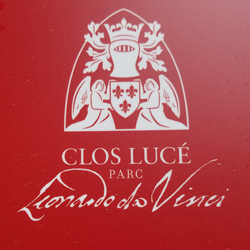


Hype:
The Château du Clos Lucé is a small château in the city of Amboise, France. The place is famous for being the official residence of Leonardo da Vinci between 1516 and 1519, when Leonardo died. Built by Hugues d'Amboise in the middle of the fifteenth century, it was acquired in 1490 by Charles VIII of France for his wife, Anne de Bretagne. In 1516, King Francis I of France invited Leonardo da Vinci to Amboise and provided him with the Clos Lucé, then called Château de Cloux, as a place to stay and work. Leonardo, a famous painter and inventor, arrived with three of his paintings, namely the Mona Lisa, Sainte Anne, and Saint Jean Baptiste. Leonardo lived at the Clos Lucé for the last three years of his life, and died there on 2 May 1519. Today, the Clos Lucé is a Leonardo da Vinci museum that reflects the prestigious history of the region and includes forty models of the various machines designed by Leonardo. The museum also includes a copy of the Mona Lisa, painted in 1654 by Ambroise Dubois.
Time:
Fees: Entrance Fee
Recommended Ages:
 | 0-3 |
 | 4-11 |
 | 12-19 |
 | 20-49 |
 | 50-69 |
 | 70+ |
Recommended Months to Visit:
| Jan |
| Feb |
| Mar |
| Apr |
| May |
| Jun |
| Jul |
| Aug |
| Sep |
| Oct |
| Nov |
| Dec |
Links: http://www.vinci-closluce.com/enhttps://en.wikipedia.org/
Navigate to 47.410235, 0.992081.
By Jeremy Dye
Jeremy Dye, Tara Dye, Greg Dye, Laura Dye,
This little castle tour was very well done. It is where Leonardo Da Vinci lived right before he died. If I remember correctly, there is an underground passage from this castle to the King's castle. We toured the house with the group then explored the grounds on our own. They had some fun replicas of some of Da Vinci's paintings and inventions.
 Cathedrale Notre-Dame de Paris
Cathedrale Notre-Dame de Paris
 Musee de Cluny - Musee National du Moyen Age
Musee de Cluny - Musee National du Moyen Age
 La Basilique du Sacre Coeur de Montmartre
La Basilique du Sacre Coeur de Montmartre
 La Maison de la Magie Robert-Houdin
La Maison de la Magie Robert-Houdin
 Royal Abbey of Our Lady of Fontevraud
Royal Abbey of Our Lady of Fontevraud
 Basilica of St. Nicholas of Nantes
Basilica of St. Nicholas of Nantes
 Normandy American Cemetery and Memorial
Normandy American Cemetery and Memorial
 Cathedrale Notre-Dame de Bayeux
Cathedrale Notre-Dame de Bayeux
 Musee de la Tapisserie de Bayeux
Musee de la Tapisserie de Bayeux